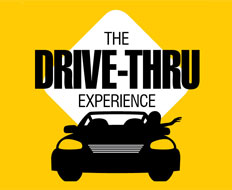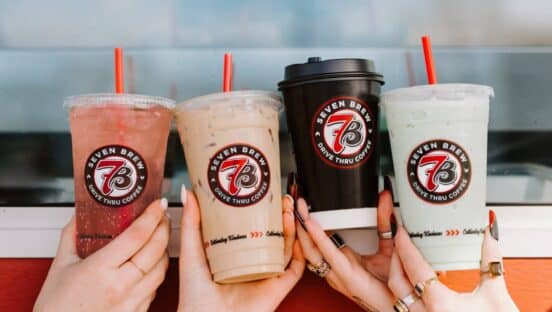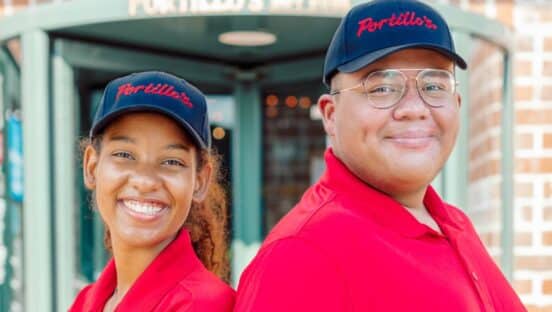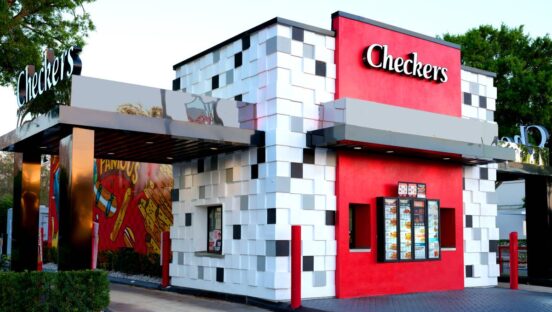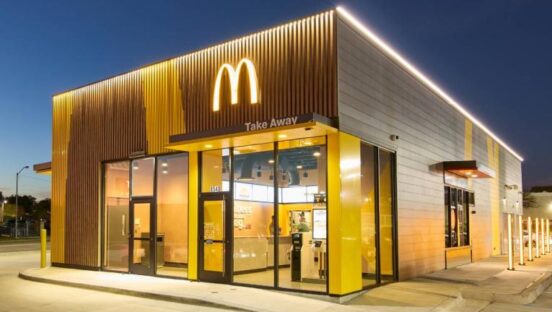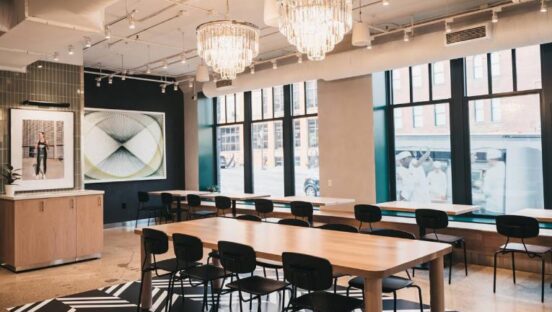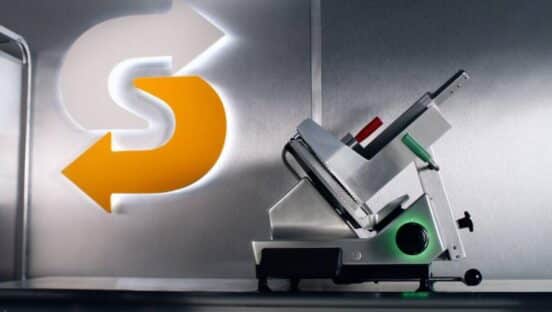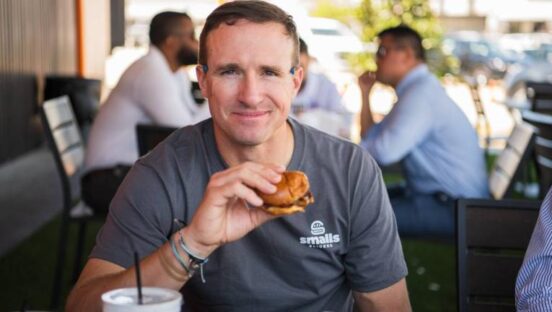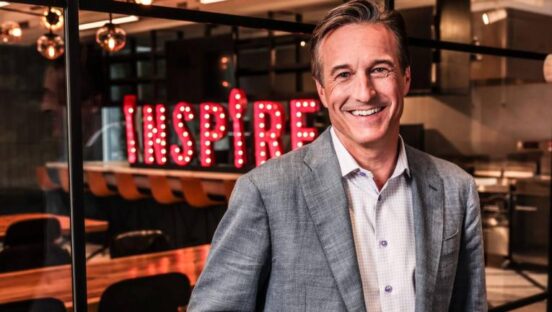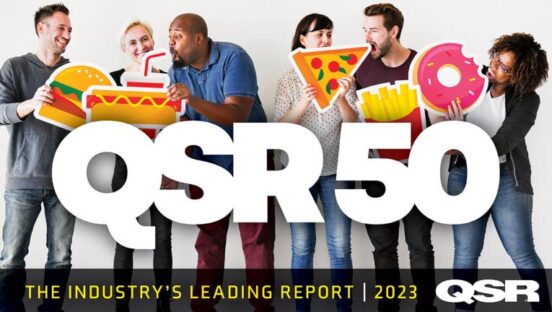Ralph Bower and his colleagues at Popeyes Louisiana Kitchen saw room for improvement.
For years, the Atlanta-based brand’s drive-thru experience suffered in industry studies, while the company’s own internal and external measures found drive-thru customers wanting. In search of better results, Bower, Popeyes’ chief operating officer, spearheaded the company’s drive-thru reinvention.
In 2009, Popeyes unveiled its Service with Speed initiative, a systemwide program aimed at turning the brand’s languishing drive-thru service in a positive direction. No longer could—or would—Popeyes shoot for the norm.
The program started simple: Provide each restaurant with headsets and timers, equipment fewer than half of existing Popeyes possessed. Later in 2009, the company instituted detailed training initiatives and reporting channels to provide the necessary metrics to gauge the program’s success and ROI. Finally, in January 2010, Popeyes corporate introduced the third and final Service with Speed step when it launched a formal employee recognition and incentive program, a move aimed at inspiring enthusiastic workplace performance.
The seemingly modest changes have added up to steady gains, both in customer satisfaction and the bottom line. In 2010’s second quarter, consumer perception of Popeyes’ speed of service increased 9 percent compared to Q2 2009 on Popeyes’ own internal Guest Expectation Monitor (GEM). In that same time frame, domestic and international same-store sales both jumped as well. (Popeyes’ internal data suggests that serving just four more cars each day at each outlet would lead to a 1 percent increase in same-store sales, a sign that little changes can make a big difference.)
“We’ve noticed a direct correlation between speed and satisfaction,” Bower says. “The drive-thru was a place where we were falling down, but I’m happy to say we’ve made huge improvements.”
In June, a focus group completed for QSR reminded all that speed and accuracy remain the top drive-thru consumer demands, giving credence to the fact that “the basics” should stand paramount.
While quick-service brands such as Popeyes have made mastering the basics a principal objective, customers have expressed a desire for even more—faster service, more accurate order fulfillment, better technology, and more personable employees among their chief rallying cries.
QSR’s recent Drive Thru-Experience Study showed negative perceptions of the drive-thru experience continuing to cloud the consumer mindset, opening up an opportunity for quick-service restaurants to impress customers with extras big and small, simple and stylish, practical and personal.
“Customers tell us that the status quo is not OK anymore. They want a drive-thru experience that is positive and personal,” Del Taco’s director of operations Kevin Pope says.
With such insights in hand, a number of quick-service brands are getting even more involved, dedicating increased time, attention, and innovation to their drive-thru business to heighten customer satisfaction and deliver an experience that transcends both traditional expectations and the competition.
Despite its gains, Popeyes’ corporate team and its operators know more work remains. In fact, Popeyes termed its systemwide program Service with Speed precisely because they wanted service to improve alongside speed. Although the latter has advanced, Popeyes’ focus moving forward will be on providing a more customer-friendly experience with the improved speed.
These types of improvement are occurring throughout the industry, as quick-serve restaurants see the drive thru as a business opportunity primed for growth, particularly as time-starved customers seek the convenience drive thrus offer.
But improved service need not be super flashy or expensive.
Take Chick-fil-A, a routine gold-medalist in drive-thru studies. The Atlanta-based chicken purveyor focuses more on substance than glam, including the customer-favorite of drive-thru lane trashcans. Consider as well Chicago’s Portillo’s restaurants, whose drive-thru staff often distributes dog biscuits to canine-carrying cars.
Such features are “expedient, helpful, and bring in the element of the human touch,” says Oli Olafsson, the CEO of Utah-based Human Touch Consulting, a leading market research firm that performs analyses of the drive-thru experience at quick-service locations. “Customers enjoy those small things and it helps foster a positive experience.”
Del Taco added outside order takers, finding what Pope calls “considerable success” with the operational change that injects personal service and order accuracy into the traditional drive-thru experience. Outside order takers use a “linebuster” handheld computer, often 5–7 cars behind the speaker. The subtle change gets orders into the kitchen quicker and has cut window time down as much as 25 seconds.
“Operators need to remember that customers come to quick serves for convenience, so the importance of that element cannot get lost as restaurants seek to improve,” Olafsson says, crediting brands that blend personal interaction and technology to improve the drive-thru experience.
[pagebreak]
Del Taco’s accompanying drive-thru training program, meanwhile, is rooted in industrywide best practices, most important of which is combing the number of customer touches. Rather than guarantee up to seven interactions with the customer, Del Taco, which does 70 percent of its business with cars, has streamlined the process into three parts: greeting and money exchange; change, receipt and condiments; and food delivery.
“Combining parts of the conversation with the customer improves flow and maintains the personal connection while increasing speed,” Pope says.
Although only a fraction of Subway’s 25,000-plus restaurants have drive-thru service, franchisees of drive-thru locations have been quick to test ideas that enhance the in-car experience.
A few Subway franchisees have designed their drive-thru areas so that four-wheeled customers can see their sandwich being made through a large picture window. Various Subway outlets are also trialing upgraded audio systems, clearer signage and lane striping, canopies to make menuboards easier to read in bright sunlight and to keep customers dry in bad weather, and the use of additional menu panels to replicate in-store signage.
Alongside the enhanced service, some compelling personality can go a long way as well.
Just outside of New Orleans in Kenner, Louisiana, Popeyes drive-thru crewmember Cynthia Carter has been a boon to business. “The singing drive-thru lady,” as the locals call her, shares upbeat serenades, first-name greetings, and well wishes with customers. The 22-year Popeyes employee’s cheerful demeanor has brought attention and customers to the Louisiana store and showcased the value in pairing improved service with fun-loving character.
Many industry veterans agree, that service sans personality and professionalism will only get a brand so far. According to QSR’s Drive-Thru Experience Study, a lack of professionalism stood only behind poor speaker quality as a top consumer turnoff.
As a part of Krystal’s master cashier program, operators seek to hire engaging personalities who carry a pleasant demeanor as well as attention to detail and professional competencies.
“Our cashiers are the main point of contact drive-thru customers have with our restaurants, so we need to put our best foot forward,” says Howard Nelson, vice president of operations for Krystal. “It starts with hiring people who look and act the part.”
The strict, 12-week master-cashier training program ensures that Krystal’s drive-thru cashiers act upbeat and personable rather than robotic. Krystal views the program, which incentivizes employees with a $2/hour raise, as a way to invest in the right people to interact with its customers.
“When you greet and prompt a customer with enthusiasm, the customer feels that and it raises the bar,” Nelson says.
Enhancing the drive-thru experience doesn’t stop at personality and service, however. It extends to the physical environment as well.
Last year, Krystal instituted its Star cleaning program, a full maintenance program designed to give a more sparkling atmosphere to customers.
“In today’s environment, incredible food and service just isn’t enough. Pair it consistently with a clean atmosphere and some personality, and customers are more likely to become loyal,” Nelson says.
Olafsson has seen operators increasingly value curb appeal, including one quick serve that painted its curbs black to cover tire scrapings.
“That first impression has to be a positive one,” Olafsson says, adding that curb appeal inspires confidence and comfort in guests.
For success and growth to find any quick serve, technology must be a part of the equation, particularly given consumers’ increasingly tech-dominated world; the drive thru cannot escape that reality.
According to QSR’s Drive-Thru Experience Study, price confirmation and order verification stand as the most popular improvements restaurants can make with consumers, an improvement often tied to POS-connected digital signage.
Many of Subway’s drive-thru outlets host order-confirmation boards, which allow customers to see precisely what they ordered and make changes accordingly. Order confirmation boards are quickly becoming one of the most rapid additions to drive-thru lanes across the country and among the most customer-appreciated features.
Along with order confirmation, new and remodeled McDonald’s outlets have incorporated the double drive-thru format, which allows the company to serve its customers with increased speed and efficiency. Yet, McDonald’s emphasis on improved drive-thru operations, which account for 65 percent of the brand’s U.S. business, runs deeper.
To ensure accuracy, McDonald’s added first-rate audio systems that deliver improved speaker clarity and also split the cash and presenter duties. To ensure ease of ordering, McDonald’s mounted brighter, cleaner, and more organized menuboards that showcase new and promotional items and installing an auotgretter, which offers consistency as it alerts each car to new offerings and promotions.
[pagebreak]
“With more customers visiting our restaurants than ever before, we want them to know that they can continue to depend on McDonald’s to provide the everyday value and convenience they’ve come to expect every time they visit our restaurants,” McDonald’s spokeswoman Ashlee Yingling says.
Potential technology offerings for quick-service drive thrus continue to capture attention.
Some outlets have employed off-site order-taking companies. Although a costly feature, these remote-location employees are trained exhaustively at order taking, including upselling techniques and add-on sales. Others brands have worked to improve the layout and look of their menuboards with advanced technology. In fact, Wendy’s franchisee FourCrown opened an all-digital restaurant in Eden Prairie, Minnesota, reputed to be the first in the quick-serve arena. The store is highlighted by a three-panel outdoor LCD menuboard offering a vivid, engaging display.
Yet, technology certainly arrives with its limitations.
Although customers, particularly of younger generations, have expressed a preference for touch-screen ordering, Subway’s trials of the amenity at its drive-thru outlets have produced mixed results.
“We feel that the customer loses out on the human interaction, especially since no two sandwiches are alike and because they are all made to order,” Winograd says.
Olafsson says the ordering option that embraces customization and interactivity if not necessarily the drive-thru staple of speed is popular in theory but not reality. “These trials haven’t gone as well as hoped,” he says. “Not everybody using the drive thru is a tech-savvy teen raised in the computer age.”
Moving forward, many say enhanced service and the smart, strategic integration of technology in the drive-thru lane will differentiate brands and gain favor with consumers perhaps beyond even the food itself. In some cases, restaurants might pair high-tech features, such as touch-screens, with an option to order with personal interaction—a dual method that would have appeal for a wide variety of customers.
As QSR’s 2010 Drive-Thru Experience Study shows, customers want more and have expressed a clear desire to visit restaurants that better address their needs and expectations. Simply meeting the basics of speed and accuracy might do, but it is unlikely to advance the brand as the new restaurant age unfolds.
“At the minimum, the service experience will need to be just as distinctive as the food experience,” Bower says. “If there’s anything we’re learning about the drive thru these days, it’s just that.”

